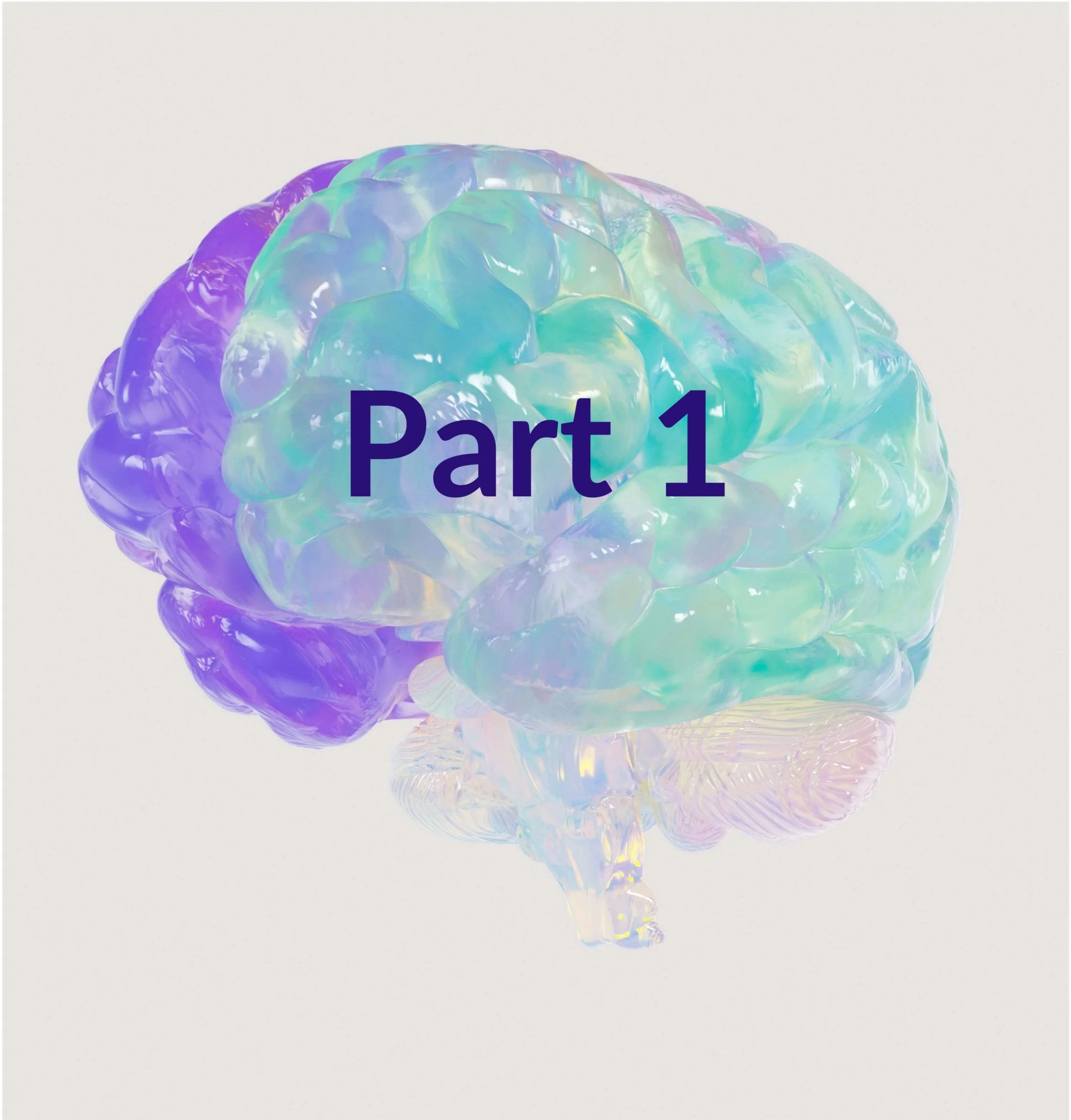EMDR Therapy Part 1: Understanding the Process for Trauma, Anxiety & Eating Disorders
May 21, 2025 | By Carissa Hannum
This is a repost of our blog originally posted in 2021.
This is Part 1 of our EMDR Blog Series.
What Is EMDR Therapy?
A significant portion of my therapeutic work is dedicated to the treating of Post-Traumatic Stress Disorder, Complex Trauma, Attachment Disorders, and Shock Trauma. Eye Movement Desensitization and Reprocessing (EMDR) therapy has become a powerful asset not only for trauma recovery but also for treatment of eating disorders such as anorexia nervosa, bulimia nervosa, binge eating disorder, and body image distress and distortion.
When clients first come to me asking about EMDR, they often mention seeing it portrayed on TV shows such as Grey’s Anatomy or they recently heard that EMDR helped Prince Harry heal from the grief and trauma of losing his mother. Many people are drawn to this approach after trying talk therapy for years and having no greater insight into their triggers and are still struggling to respond differently in the moment.
Some even jokingly ask, “How exactly does this witchcraft work?!” That curiosity inspired this blog post so I can share what EMDR therapy is, how it works, and why it may be helpful for you.
What Is Eye Movement Desensitization and Reprocessing (EMDR)?
Okay, so let’s break this down. EMDR is a comprehensive, research-supported psychotherapy approach designed to help clients understand, reprocess and heal their distressing life experiences that may impact ways of daily living and functioning. EMDR therapy was first developed within the treatment of Post Traumatic Stress Disorder (PTSD) for military veterans. EMDR therapy has since been shown to be effective across a wide range of issues and populations.
EMDR therapists are trained with specific protocols and standards that pull from several different therapeutic theories. Ultimately, these protocols guide clients in identifying distressing memories and reprocessing them. Reprocessing trauma memories lead to more adaptive coping mechanisms and less distress in the present moment experiences.
How Was EMDR Therapy Created?
EMDR Therapy was created by Dr. Francine Shapiro following a life changing cancer diagnosis. While walking in a park, Dr. Shapiro noticed that moving her eyes from side to side, while holding her distressing thoughts about her cancer diagnosis in her mind ultimately decreased her stress.
How Does EMDR Therapy Work?
Understanding Memory Networks
EMDR therapy helps clients unlock and understand memory patterns and networks. Think of your brain like a computer full of files and folders. Just as a computer, your brain organizes memories and experiences in certain files and folders that relate to one another. Your brain uses these memory networks to make sense of current situations and choose responses.
When someone experiences trauma like a car accident, childhood bullying, or an eating disorder, the brain may store those memories in a distorted or distressing way. Those memories are now like a computer virus. The computer virus not only affects one file, but multiple files which ultimately can affect the computer’s overall daily functioning.
Distressing experiences and trauma affect our functioning the same way as a computer virus. Even after developing awareness and knowledge, clients can struggle to change their behaviors in the face of their trauma without fully reprocessing the experience. We may choose certain behaviors and reactions due to those past experiences and memories.
How Trauma Gets Stored in the Brain
Trauma is stored differently than regular memories. During a traumatic event, our brain shifts our memory networks into survival mode and goes “offline” to help us survive the experience by activating our fight, flight, and freeze response.
Because of this, your brain doesn't adequately process the traumatic event and causes a continued stress response during any experience remotely similar to the original traumatic event. For some people, trauma is stored in their bodies or in their physical sensations. The body quickly feels like the enemy and many experiences may cause them to live in fear.
The Role of Bilateral Stimulation (BLS) in EMDR Therapy
Bilateral stimulation is a key component of EMDR therapy. It involves activating both sides of the brain through:
Eye Movements (side-to-side tracking, repeatedly activate the left and right side of the brain guided)
Touch (Tapping on hands, shoulders, or knees)
Sound (Auditory tones alternating sounds in each ear)
This stimulation helps the brain reprocess traumatic memories in a new way. This process is similar to how the REM sleep cycle consolidates and organizes experiences.
EMDR therapy helps clients actually reprocess these memories using bilateral stimulation (BLS) and dual awareness. BLS utilizes touch such as tapping, as well as sound, and/or eye movements to repeatedly activate the left and right side of the brain. The bilateral stimulation creates neurological patterns that cause relief from negative emotional experiences. In addition, this pattern of activation is similar to the REM sleep cycle, which activates the working memory and prefrontal cortex of the brain.
Dual Awareness: Staying Present While Processing Trauma
EMDR therapy asks a client to maintain a mindful connection in the present moment with their therapist, while recalling distressing memory experiences. This is called dual awareness. The dual awareness and bilateral stimulation allows clients to reprocess traumatic memories fully rather than the memory network going offline again. In addition, bilateral stimulation helps clients reinforce adaptive patterns of behavior. Reprocessing memories not only helps clients access adaptive patterns of responding, but at times can result in the actual memories changing, beliefs about self changing, and symptom reduction. EMDR therapists explore the past, present, and future aspects of memory to help clients heal from their trauma and symptoms.
Does EMDR Therapy Only Treat Trauma?
Conditions EMDR Can Help With
No! EMDR does not only treat trauma. EMDR therapy was originally developed for trauma but it now supports a wide range of mental health concerns because of the way it examines memory networks related to distressing experiences and events. Many protocols have been created and been effective with other diagnoses, issues, and symptoms. It is shown effective for:
PTSD, Complex Trauma, Shock Trauma, and Attachment Issues
Anxiety Disorders and Phobias
Substance Use Disorders
Eating Disorders and Body Image Issues
Depression and Mood Disorders
Shame and Self-Esteem Issues
Maladaptive Behaviors
And more
How to Prepare for EMDR Therapy
I tell all of my clients that because EMDR is actually allowing the body and the mind to respond to trauma in a way that it could not at the time due to survival, the actual reprocessing can be distressing. It is important for EMDR therapists to appropriately resource clients with a multitude of skills to help clients deal with the thoughts, emotions, sensory input, body sensations, and memory networks that can be activated in the mind and body during reprocessing. It can be a lot! It is perfectly acceptable and okay to need time to prepare for EMDR therapy. Here are a few things to work on in the meantime:
Practice mindfulness and meditation to stay grounded in the present
Build emotional and distress tolerance skills
Create a strong support system
Learn about how trauma affects the brain and behavior
Explore beliefs or fears that might interfere with your healing
Talk to your current therapist about whether EMDR is a good fit for your needs
Ask yourself: What do I need to feel safe and supported during memory reprocessing?
Is EMDR Therapy Right for You?
EMDR therapy can be a transformative path toward healing from trauma, anxiety, eating disorders, and more. If you’re curious whether EMDR is right for you, talk with your therapist or reach out to our team.
Ready to learn what comes next? In Part 2 of our EMDR blog series, we explore the essential trauma preparation work that takes place before reprocessing begins including stabilization, mindfulness, and emotional regulation.
Reach Out
If you’re considering professional support, we’re here to help. Please reach out to schedule a free, no-commitment consultation. There’s no fee and no obligation—just click the button below to get started.
You can also call or text us at 202-656-3681, or email us directly. Give yourself the opportunity for the support you deserve.





